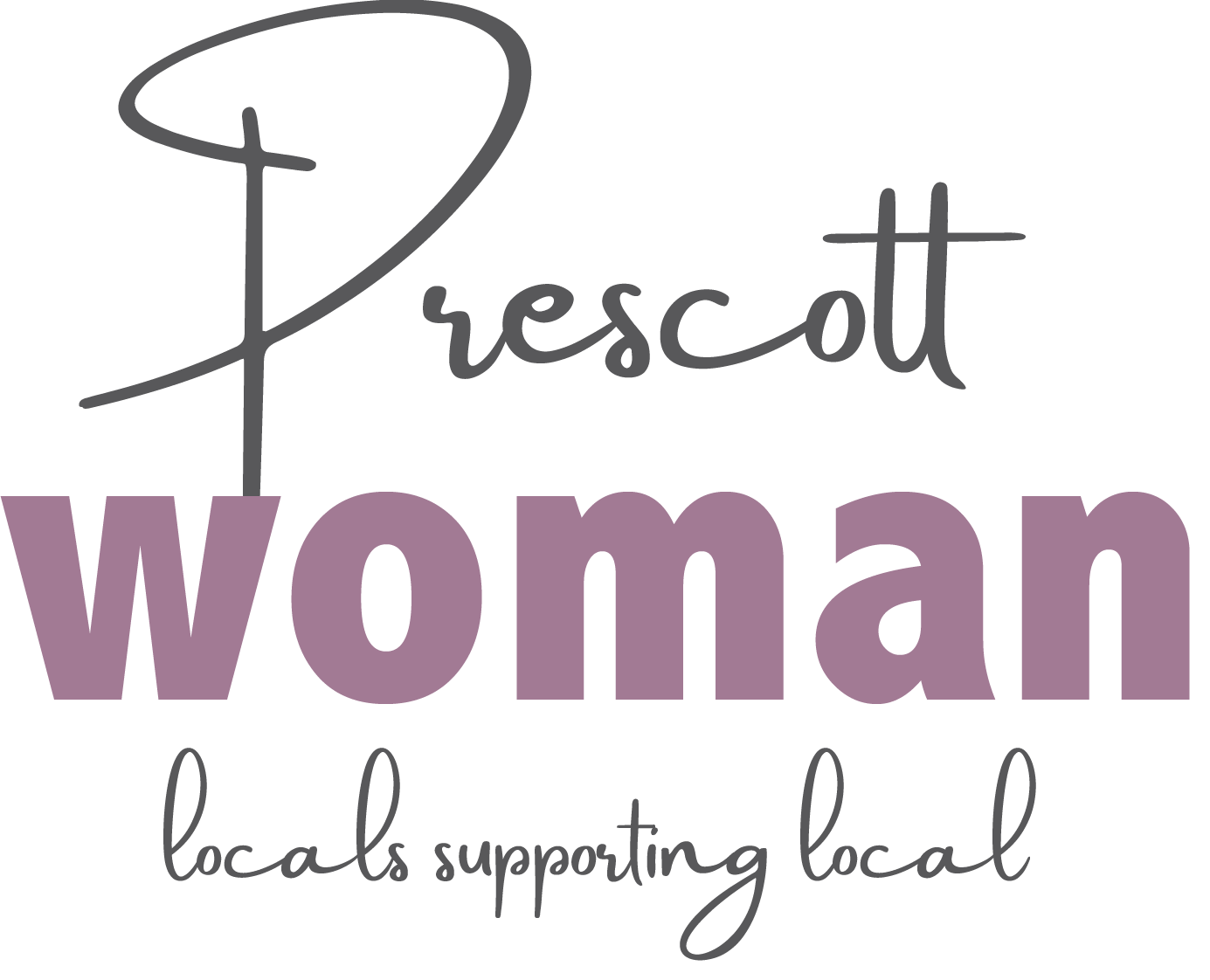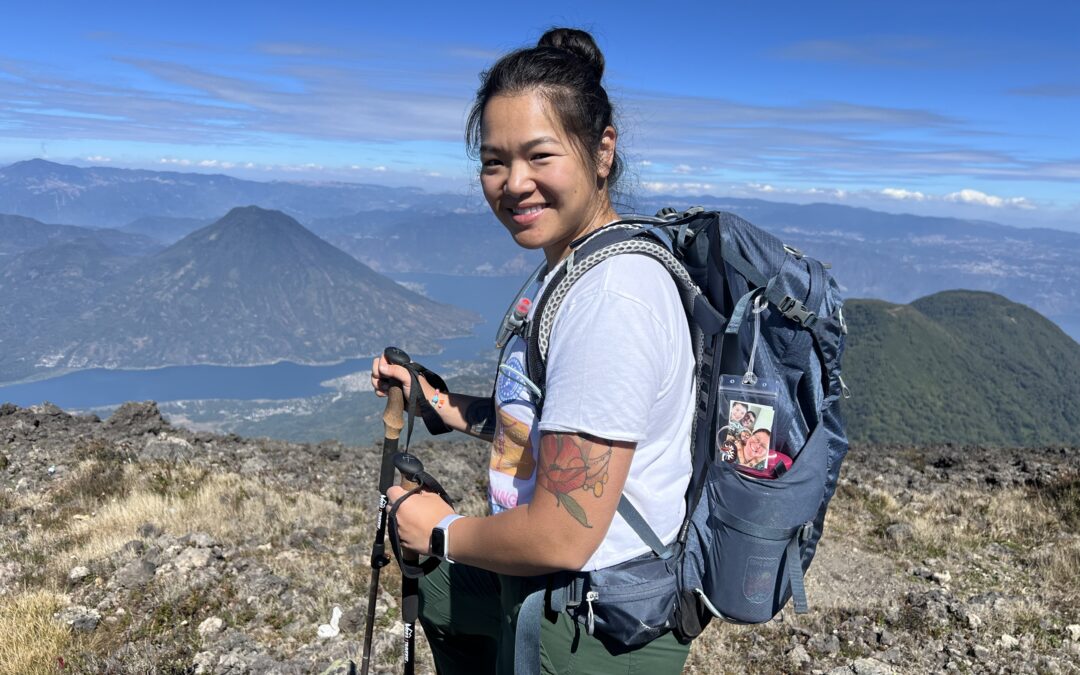To demonstrate what’s possible after living kidney donation, Prescott woman summits three Guatemalan volcanoes, totaling 32 miles and 12,239 feet of elevation gain
By Hilary Dartt
Alex Clark likes to be active; in her words, she likes to “go, go, go.” She considers herself an athlete; in addition to running and climbing, she was a CrossFit enthusiast.
In early 2019, when her sister-in-law needed a kidney, she didn’t hesitate to get tested; she figured she’d recover well and get back to her regular life. She worked in a senior living community at the time and knew exactly what the quality of life was like for people on dialysis. She couldn’t imagine that existence for her sister-in-law, whose two kids were just toddlers at the time.
“Before that, I didn’t even know living donation was a thing,” Alex said. “I was signed up as a donor on my license … I figured it wouldn’t hurt to get tested and see if we were a match, and we just happened to be.”
The whole process started in April 2019, and the donation, which went smoothly, happened that November.
Alex had seen the organization, Kidney Donor Athletes (KDA), which “promotes the gift of life through living kidney donation among active individuals and athletes by building a community that inspires, supports, and educates people about the experience of kidney donation” (kidneydonorathlete.org). KDA offers an annual One Kidney Climb event, in part to bring awareness to living donation and demonstrate what is possible post-donation.
In 2024, Alex saw that KDA’s 2025 event was the 3 Volcano Challenge, where athletes would summit three volcanoes in Guatemala—climbing more than 8,000 feet in one week.
“I love everything outdoors and also love the physical challenge,” Alex said. “The idea of meeting other people who have also donated their kidney, seeing who they are and where they came from,” appealed to her.
“We all like hiking and we’ve all donated a kidney, so we have those two things in common to start off with. It sounded like a cool experience.”
In early 2024, she applied for the challenge, and she found out that spring that she’d been accepted. To prepare, she loaded her hiking pack with a weighted plate and “did a lot of hiking around here,” she said, adding that she felt fortunate to have so many places to hike locally—and to be at an elevation.
Life was full and busy as a single mom with a full-time job, but she made it to the gym when she could (the Stairmaster was her best friend and worst enemy).
She and the other participants joined a WhatsApp group and a Facebook group, and shared photos of the gear they were buying and packing. Those virtual conversations provided a glimpse into everyone’s personality, Alex said. “You could see who was organized and who wasn’t.”
Finally, this January, she flew to Guatemala City, with a layover at JFK, where she met her roommate, Mary, which was beneficial. The two of them navigated Guatemala City’s airport together, going through customs, finding the baggage claim, and getting money for the trip.
The whole group—15 hikers and a couple of guides—met up there and took a bus to an Air BnB in Antigua. They had a free day, during which they explored the city, toured a coffee farm, and hung out as a group, and the next day, they went for their first hike.
Hike One: Volcán Pacaya. 5.1 miles, 1,532 feet elevation gain, max elevation 7,596 feet.
“It was the easiest and shortest hike to get us acclimatized to the elevation,” Alex said. “It is still an active volcano, so we couldn’t go to the very top, but when we got as high as we could, we traveled around this crater along the edge and then we had pizzas that were cooked on the hot lava rocks.”
“We all hiked together as a group,” Alex said, adding that they saw “a ton of volcanoes” since they were on a fault line.
That evening, they hung out and packed for the next day’s hike.
Hike Two: Volcán Acatenango – Basecamp. 6.2 miles, 3,380 feet elevation gain, max elevation 11,711 feet.
A narrow ridge joins this dormant volcano with an active volcano, Volcán Fuego.
“There was a lot of anticipation for this one,” Alex said. Sure enough, “The hike up to Basecamp was challenging, to say the least.”
The first two kilometers were straight up through farmland on a very narrow, slippery dirt path lined on either side by barbed wire, then it was Mayan Zig Zags (their version of switchbacks) and a lot of undulating hills (Alex said the hikers called them “uptulating”).
They started the hike around 9:30 a.m. The group gor pretty spread out on the ascent, which Alex said made it feel more challenging. “It kind of became a personal challenge. It was hard.”
They made it to Basecamp just before 3 p.m. It was cloudy for most of the ascent, but the moment we arrived at Basecamp, the clouds cleared and we saw Volcán Fuego.”
“Everyone was thrilled,” she said.
They spent the night at Basecamp, which just happened to fall during the planetary alignment. Alex didn’t sleep at all, but she didn’t mind; the view of the nearby volcano and the starry sky was nothing short of spectacular.
Hike Three: Volcán Acatenango – Summit. 2.9 miles, 1,334 feet elevation gain, max elevation 13,045 feet.
“We started hiking in the dark at 4 a.m. to summit Volcán Acatenango by sunrise at 6:30 a.m. We were hiking across scree on a path about 12 inches wide on the side of the volcano with 40-mile-per-hour winds,” Alex said. “Just focus on the boots in front of you and take it one step at a time.”
Although the hike felt “a little precarious at times,” Alex said, “the view was unbelievable as the sun started to rise.”
“It was incredible to be doing this hike and the sun is rising and it’s behind this other gigantic volcano. It was truly a once-in-a-lifetime experience.”
On the descent, the group got to “sand ski” down the screen, which Alex described as “so much fun!”
They had breakfast at basecamp and then hiked back to the bottom.
“Everyone was so excited that everyone survived,” she said. “Everyone was so happy to have that one over with.”
After the hike, the group went to a macadamia nut farm for lunch, and they got to take a tour. Alex said the farm was “so beautiful,” and had tons of plants and flowers; the Guatemalan climate makes for spectacular flora.
The next day, the group had a travel day as they moved to the location of their final hike. They took a bird-watching tour (and saw a quetzal, the Mayans’ sacred bird). They also did a walking trou of the town and had a nice dinner out.
Hike Four: Volcán Atitlán. 11.6 miles, 5,993 feet elevation gain, max elevation 11,514 feet.
Alex called this hike “Our final and most challenging volcano.”
“We hopped in the back of a pickup truck at 3 a.m. and rode to the trailhead,” she said. “We started hiking in the dark around 3:30 a.m. and made it to the summit around 10:30 a.m. We felt great for all but the last two hours, which was hiking over loose lava rocks.”
“When our group finally summited, we all started crying. We did it. Not only did we prove to others that we can live active and fulfilling lives after donation, which is the whole purpose behind the One Kidney Climb, but more importantly we proved to ourselves that we can achieve anything we set our minds to.”
The descent from the Volcán Atitlán summit was grueling, Alex said, “but our group cheered each other on and our guide kept us going with his positivity and laughter.”
They returned to the trailhead around 4:50 p.m., rode back to the hotel to shower, and then “ate the best tacos we’ve ever had” at a tiny, hole-in-the-wall restaurant.
Naturally, Alex said she had lots of takeaways after such an epic adventure.
“It had been a long time since I traveled internationally,” she said. “This trip reminded me—I really really do love to travel, and it’s something I have to make time and make money for, something I would love to share with my son as he gets older.”
Another benefit of the experience: it “unites people, even though we’re all so different.”
She and two of the women she met during the One Kidney Climb will hike the Grand Canyon rim to rim this fall (coincidentally, the next One Kidney Climb will also hike the rim to rim).
And, “For most of us, these hikes were far more challenging than donating a kidney!”
The truth is, things look different for Alex post-donation. She discovered she has an autoimmune disorder; her body could handle it fine pre-donation, but the effects show up now that she has just one kidney. While she can still hike and run, she can no longer do CrossFit.
Still, she said, “The whole purpose of the One Kidney Climb is to prove to other people that you can have a full and fulfilling life after donation. It doesn’t have to change your life. This hike was proving it to myself.”
Learn more about the One Kidney Climb at https://kidneydonorathlete.org/one-kidney-climb-3-volcano-challenge-2025/

